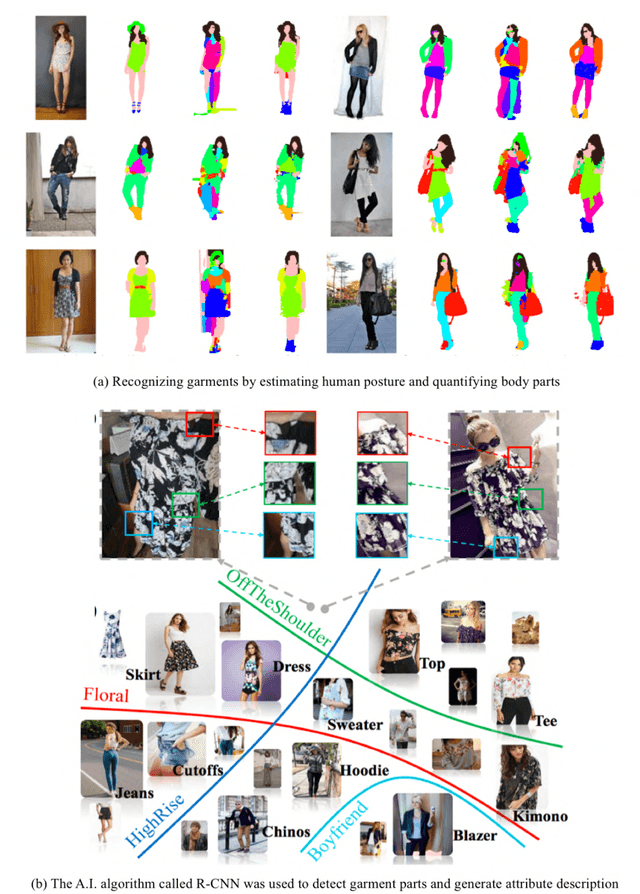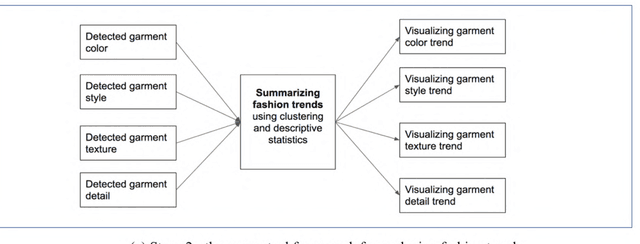Using Artificial Intelligence to Analyze Fashion Trends
Paper and Code
May 03, 2020



Analyzing fashion trends is essential in the fashion industry. Current fashion forecasting firms, such as WGSN, utilize the visual information from around the world to analyze and predict fashion trends. However, analyzing fashion trends is time-consuming and extremely labor intensive, requiring individual employees' manual editing and classification. To improve the efficiency of data analysis of such image-based information and lower the cost of analyzing fashion images, this study proposes a data-driven quantitative abstracting approach using an artificial intelligence (A.I.) algorithm. Specifically, an A.I. model was trained on fashion images from a large-scale dataset under different scenarios, for example in online stores and street snapshots. This model was used to detect garments and classify clothing attributes such as textures, garment style, and details for runway photos and videos. It was found that the A.I. model can generate rich attribute descriptions of detected regions and accurately bind the garments in the images. Adoption of A.I. algorithm demonstrated promising results and the potential to classify garment types and details automatically, which can make the process of trend forecasting more cost-effective and faster.
 Add to Chrome
Add to Chrome Add to Firefox
Add to Firefox Add to Edge
Add to Edge